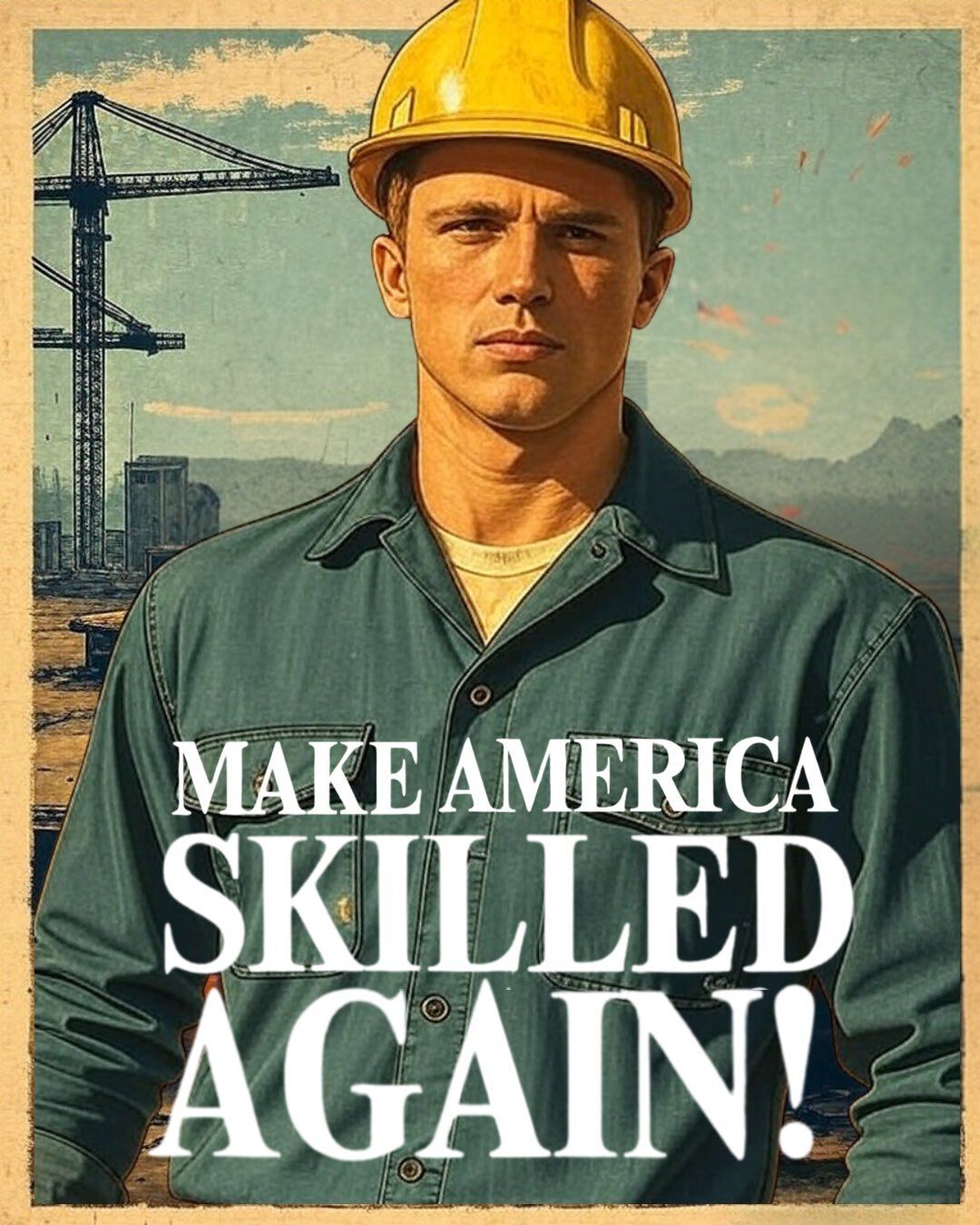
Image: U.S. Department of Labor
A New Era for American Trades
In April 2025, President Donald J. Trump signed Executive Order 14278, “Preparing Americans for High-Paying Skilled Trade Jobs of the Future”, marking a centerpiece of his administration’s workforce agenda.
The initiative coined “Make America Skilled Again” (MASA), sets out to rebuild the nation’s skilled labor pipeline by strengthening apprenticeships, streamlining federal programs, and prioritizing high-demand industries like shipbuilding, manufacturing, energy, and AI.
For the skilled trades, it’s a familiar refrain with a new level of attention. Decades of underinvestment have left the U.S. short on welders, electricians, HVAC techs, and marine tradespeople. Now, federal dollars are being redirected to address those shortages.
$86 Million for States: A First Test of MASA in Action
On September 30, 2025, the U.S. Department of Labor announced over $86 million in grants to 14 states to invest in skills training for emerging and critical industries.
The funding (Industry-Driven Skills Training Fund) is designed to reimburse employers for training and upskilling workers in high-demand fields such as shipbuilding, advanced manufacturing, artificial intelligence, and energy production.
“President Trump has directed the Labor Department to Make America Skilled Again by providing states with the resources they need to expand on-the-job training opportunities.”
Over $20 million of the total supports revitalizing the domestic shipbuilding industry, including training in welding, marine electrical, and manufacturing.
Grant highlights include:
State | Award | Focus Sectors |
|---|---|---|
Arizona | $5M | Advanced Manufacturing |
Connecticut | $8M | Manufacturing, Construction, Shipbuilding, IT, Healthcare |
Georgia | $5M | Construction, Energy, Manufacturing |
Idaho | $8M | Minerals, Nuclear, Manufacturing |
Louisiana | $7M | Industrial Trades, AI Infrastructure |
Maine | $8M | Shipbuilding, Aerospace, Defense |
Michigan | $8M | Shipbuilding |
Mississippi | $5.7M | Shipbuilding |
Oklahoma | $6M | Manufacturing, Aerospace, AI |
Tennessee | $5M | Manufacturing, Nuclear, Tech Infrastructure |
Texas | $5.4M | Aerospace, Energy, Semiconductors, Shipbuilding |
Wisconsin | $7.3M | Manufacturing, Generative AI |
Wyoming | $3M | Construction, Mining, Nuclear, IT, Healthcare |
What “Make America Skilled Again” Actually Does
The MASA initiative is a restructuring of how the federal government funds and measures workforce development.
Under Executive Order 14278, the Trump administration directed federal agencies to:
Consolidate and simplify existing workforce programs to reduce red tape.
Reward outcome-based training, reimbursing employers only when participants are successfully employed.
Expand registered apprenticeships, aiming for over 1 million active apprentices nationwide.
Align training programs with “critical industries” like AI, shipbuilding, nuclear energy, semiconductors, and advanced manufacturing.
Promote on-the-job learning over classroom-based education.
According to the White House fact sheet, the administration calls this a “demand-driven” system that puts employers at the center of workforce strategy.
The Promise: Rebuilding Industrial America
For the skilled trades, MASA’s goals sound like long-overdue progress:
More apprenticeship pathways for welders, electricians, HVAC technicians, and machinists.
Closer ties between employers and educators, allowing companies to train for the exact skills they need.
Recognition that trades are critical infrastructure, not secondary career choices.
The Technical College System of Georgia, one of the grant recipients, plans to use its $5 million award to expand advanced manufacturing and energy-sector training across its campuses—building direct pipelines into employer-led apprenticeships.
In Maine and Michigan, where shipbuilding has been a regional lifeblood for generations, new funding will support welding and marine electrical apprenticeships designed to restore U.S. maritime dominance.
These examples demonstrate what the administration calls “apprenticeship-driven industrial revival”—a philosophy that mirrors its broader “America First” economic agenda.
Opportunities and Challenges for Employers
For contractors, manufacturers, and trade employers, the MASA strategy offers tangible opportunities:
Reimbursements for training new hires, lowering the financial barrier to upskilling.
Customizable programs aligned to local industry needs.
Easier access to federal funds through streamlined state systems.
But with opportunity comes responsibility. The new grants are performance-based, meaning employers must prove results: successful job placements, skill attainment, and retention.
If implemented effectively, this could raise standards across the trades. If not, it could lead to short-term training that fails to deliver sustainable careers.
The Bottom Line
The “Make America Skilled Again” strategy represents one of the most ambitious workforce realignments in recent U.S. history.
By putting employers in the driver’s seat and prioritizing industries like shipbuilding and manufacturing, it signals a genuine shift back toward the trades. But with deep funding cuts and heavy reliance on states, the plan’s success will depend on execution—and on ensuring that flexibility doesn’t come at the expense of equity.
For now, the DOL’s $86 million grant program is the first real-world test. If states can prove that employer-driven training can both fill jobs and build lasting careers, MASA could redefine how America builds its workforce for decades to come.
Get Involved
Whether you’re a tradesperson or a contractor, now’s the time to engage with your state’s workforce initiatives and training providers.
👉 If you’re hiring: post your open roles or explore TradesmenUp’s job board to connect with qualified tradespeople in HVAC, electrical, plumbing, welding, and more.
👉 If you’re looking for work: create a profile and discover skilled trades jobs across the country.
